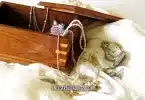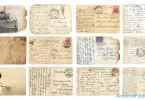Do the people in your family give you genealogy heirlooms all the time? It is not unusual for the family genealogist to get the reputation as the one to go to when one needs to give away an heirloom when downsizing and wants to make sure it stays safe and protected. If this is you, you may find yourself with a house full of genealogy heirlooms before long. When you start amassing a large collection of them, you need to start organizing them, or future generations will not know what they are, who they belonged to, or their genealogical significance.
These are seven things you need to know before you organize your genealogy heirlooms.
1. Gather Heirlooms into Sections
The first thing you need to know is what heirlooms belong to what branches of your family. Gather all of your heirlooms in one place, and then separate them into groups according to which branch of the family they belong to, using scraps of paper to keep track if you need to.
2. Know the Exact Person Who Originally Owned or Made Each Item
You were probably told this when you were given the heirlooms. However, if you don’t remember, you can always call the person who gave it to you and ask for a refresher. You will need this knowledge to label the heirlooms later before you organize and store them.
3. Understand What Type of Environment Each Heirloom Needs to Keep it in the Best Condition
Some heirlooms can be kept out in the open and displayed on bookshelves or walls without damaging them. Others, such as textiles, paper, and extremely old antiques may need special environments to keep them in good condition for many centuries to come. Understand the type of care each heirloom needs, so you can arrange to store it properly.
4. Know Where You Have Room to Keep the Heirlooms Where They Won’t Be Harmed
Look through your house for a space for the heirlooms you will not be displaying. Make sure there is enough room for everything without anything being crowded, and where they will be protected from the danger of being damaged. Keeping them out of the reach of small children and pets is important.
5. Understand the Need for Inventory Lists
You may be keeping many heirlooms that belonged to one person or one family branch in a special container. You need to put an inventory list in that container, with a description and provenance of each item in it. You should keep a copy of this inventory list on your computer, as well as an inventory list for heirlooms that are on display. It will help you and future generations keep track of the heirlooms.
6. Make Arrangements for the Heirlooms
You probably want the heirlooms to stay in the family. If you have decided they should be donated to an archives building or museum one day, those wishes need to be made known, as well. Whatever you plan to do with the heirlooms when you can no longer take care of them, make sure to put it in writing, ideally in a will, but at least on a notarized paper you keep with someone you trust.
7. Get the Heirlooms Appraised Before Storing Them
You need to know how much each heirloom is worth, and ideally get insurance for them in the amount of their combined worth. The money won’t replace the heirlooms if something happens to them, but it will soften the pain of the loss and make sure you’re compensated for it.






